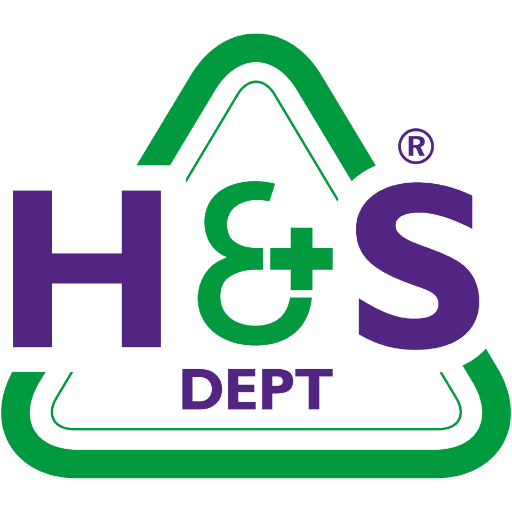What can we learn from the annual workplace fatality statistics?

In the 12 months to March 2022, 123 employees were killed in work-related accidents. The most dangerous sector was construction, accounting for 30 deaths. This was closely followed by agriculture and manufacturing with 22 deaths each. This is similar to the data from previous years.
Also similar were the most common causes of death. Falls from height remain the biggest cause of workplace fatalities, followed by collisions with moving vehicles and being struck by flying or falling objects.
In terms of age and gender, men and older employees remain the most at-risk groups. 94% of all fatalities were male, and a quarter were over 60. For workers over 60, the death rate per 100,000 workers was four times higher than the average. Once again, this is similar to data from previous years.
Although any death is too many, these figures should be viewed in the wider context of workplace fatalities over time. Since 1981, annual fatalities have fallen by 75%. In the last 20 years, they have halved.
This just goes to show how effective H&S legislation can be. It’s no coincidence that this trend began after the introduction of the Health and Safety at Work Act 1974, and that deaths have continued to drop as more laws have been introduced to protect workers.
These statistics don’t just cover employee fatalities. The HSE reported that 80 members of the public were also killed in work-related accidents, with the vast majority of these deaths occurring in the service sector.
Although this represents a drop from the pre-pandemic average of 96, it is a reminder that there is still work to be done to keep the public safe.
H&S legislation makes it every employer’s duty to protect the general public as well as their own workers. If your work involves contact with non-employees, they should be factored into your risk assessments. If risks cannot be avoided altogether, you should ensure that the public are given adequate warning of the dangers.
If you need help creating a public risk assessment, or are having trouble with any other area of H&S, don’t hesitate to give us a call.
Drugs and alcohol policy is an H&S issue as well as an HR one

- Substance abuse can impair decision making and slow reaction times. This is especially dangerous when driving or operating machinery.
- Drug and alcohol misuse can lead to low productivity, forcing other employees to rush their work.
- Employees who abuse drugs and alcohol are more likely to behave recklessly or violently towards their co-workers.
In order to prevent substance abuse, it’s important to recognise the early warning signs. These include:
- Regularly missing shifts
- Sudden changes in behaviour
- Unexplained dips in productivity
- An increase in accidents or near-misses
- Violent outbursts and other conduct issues
Remember that none of these behaviours is a sure sign of substance abuse. They could just as easily be caused by stress or illness, so don’t jump to any conclusions.
Work with your employees to create a drugs and alcohol policy, clearly setting out what is and isn’t acceptable. Some roles are safety critical. Substance abuse by drivers, heavy machinery operators and people in caring roles may all lead to particularly severe consequences.
You could also consider periodic drug testing, but this is a complex step and must be done with your employees’ consent.
What are the top risks in an office workplace?
With workers returning to the office in their millions, it’s a good time to refresh your memory on the main health and safety risks. Here are four things to watch out for, and what you can do to keep your employees safe.
Slips, trips and falls – Slips, trips and falls are the most common cause of workplace injury in the UK. Be sure to clean up spills promptly, and put down wet floor signs if necessary. You should also pay attention to outdoor areas, removing leaves from paths in autumn and gritting walkways in winter.
Poor lighting – As well as increasing the risk of falls, poor lighting can contribute to long-term eye strain. You should ensure that all working areas are sufficiently lit, and keep lighting spares on hand.
Heavy lifting – Manual handling causes over a third of workplace injuries. It’s important to train employees in the proper way to lift objects, and ensure that they are never asked to lift anything beyond their capability
Electrical hazards – Damaged or overloaded electrical outlets can cause electrocution and lead to electrical fires. Make sure that all electrical equipment is inspected frequently, and test fire alarms on a regular basis.
A little creativity goes a long way in H&S

This year’s prize went to Solvay Derbyshire, a chemical engineering company who came up with a safer way to load resin mixing bowls into an oven. Previously, workers had to manually lift the 38kg bowls from the ground. This was identified as a serious ergonomic risk.
Working with an industrial oven manufacturer, Solvay created a floor-level oven with removable handles, allowing employees to wheel the bowls directly into the oven. As well as being safer, this also improves productivity as only one worker is needed to perform the task.
By thinking creatively, Solvay improved safety, increased efficiency and generated plenty of positive PR. If you need help getting an H&S idea off the ground, don’t hesitate to get in touch.
Myth Busters: staying hydrated during a hot summer

Getting carried away
A bar refused to let a customer carry a tray of drinks to their table because they had not been “health and safety trained”. This is, of course, ridiculous, not to mention a little insulting to the customer.
Health and safety legislation does not make reference to training customers, especially for a task that they perform regularly in their own homes. The bar staff might have preferred to carry the drinks themselves, but there was no need to frame it as a legal issue.
Not our cup of tea
In another case, a complainant asked whether a risk assessment was needed to serve tea at a school fete. This is exactly the kind of H&S overreach that puts people off volunteering at such events. A general risk assessment is a good idea for any public event, but there’s no need to create a separate one for each part of the day. Especially not for something as ordinary as serving tea!


